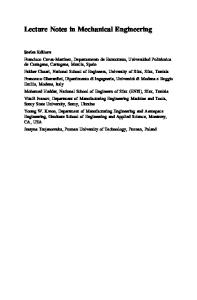Liquid Metal Infiltration Processing of Metallic Composites: A Critical Review
- PDF / 4,756,244 Bytes
- 21 Pages / 593.972 x 792 pts Page_size
- 21 Downloads / 427 Views
ON
LIQUID metal infiltration of ceramic preform is apparently the best suited fabrication method to produce metal matrix composite components with variety of complex shapes having high volume fraction of reinforcement. Infiltration is a liquid-state fabrication method, in which a porous preform (reinforcement) such as ceramic particles, fibers, woven etc. are impregnated in a molten matrix metal, which fills the pores between the dispersed-phase inclusions. Synthesis of porous ceramic preform with sufficient mechanical strength, uniform pore distribution, pore size, and porosity level is one of the crucial steps involved in the infiltration processing of composites.[1,2] The captivating properties of these ceramic foams such as thermal resistance, low density, controlled permeability, low thermal conductivity, high surface area, and high structural uniformity make them potential candidates for multiple engineering applications.[3,4] Some of the
K.M. SREE MANU, Senior Research Fellow, and T.P.D. RAJAN, Senior Scientist, are with the Materials Science and Technology Division, CSIR-National Institute for Interdisciplinary Science and Technology, Trivandrum, India, and also with the Academy of Scientific and Innovative Research, New Delhi, India. Contact e-mail: [email protected] L. AJAY RAAG, Research Scholar, and B.C. PAI, Emeritus Scientist, are with the Materials Science and Technology Division, CSIR-National Institute for Interdisciplinary Science and Technology. MANOJ GUPTA, Professor, is with the Department of Mechanical Engineering, National University of Singapore, Singapore, 119260, Singapore. Manuscript submitted February 26, 2016. METALLURGICAL AND MATERIALS TRANSACTIONS B
important fabrication methods for porous ceramic foams are polymer replica techniques, gel casting, direct foaming of suspensions, and using pore-forming agents (PFA).[5–11] Al-, Mg-, and Cu-based alloys have been successfully used as matrices to contrive MMCs through liquid infiltration, as they can be easily melted and handled in the liquid state. Difference from one infiltration method to another is based on the technique that is used to drive the molten metal to enter the preform. The present paper gives the state-of-art knowledge on the various infiltration processing methods of MMCs and their characteristics. The investigations carried by the authors at NIIST, Trivandrum, India on infiltration processing of the metal matrix composites using porous ceramic preform are also described.
II.
METALLIC COMPOSITES
The inclusion of high strength and modulus ceramic reinforcements to a ductile metal matrix forms the metallic composites having unique combination of properties offering high resilience, high-temperature applications compared to polymer and ceramic matrix composites. From tribological perspective, the addition of hard ceramic reinforcements increases the wear resistance of the metallic matrix. Ultimate combination of properties of MMCs depends on a number of factors related to matrix, reinforcement, processing, and heat treatment. Samer e
Data Loading...











